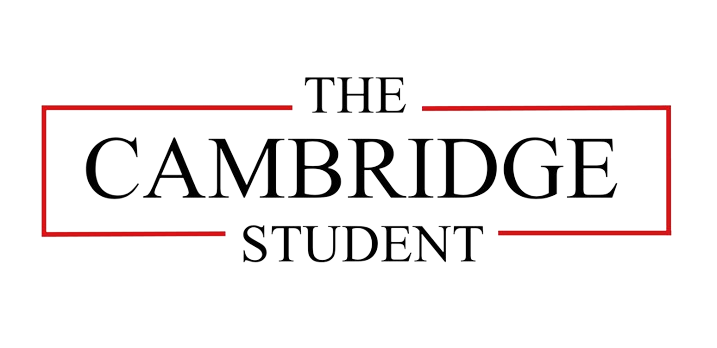‘The Inner Monologue Unleashed’: Ella Scott’s ‘Very Almost Half Funny’ Review
Maia von Malaisé looks back on Ella Scott’s debut stand-up show, which explores the ‘inner critic’ with an impressive blend of sincerity and playfulness
Ella Scott’s debut stand-up show, Very Almost Half Funny: Staring My Inner Critic, is a testament to the strength and originality of her comedy style: hyper-self-consciousness ‘shame-inspired-therapeutic-vulgarity’. Scott’s comedy is skillfully balanced between intellectually precise humour and self-deprecation, avoiding gimmickry. While some moments land more cerebrally than comically, Scott’s material demonstrates immense potential. Her strength lies in relatable, awkward experiences, simultaneously intellectual and playful, which form a significant part of her USP.
Swiftly, Scott introduces her inner critic via a voiceover, establishing the show's premise: 'time to make people laugh/you signed up for this/you’ve got sweaty palms'. As Scott interacts with this voice, the audience witnesses their evolving relationship. Attacks range from personal and creative - ‘That’s a bit of an overshare Ella' - to analytical, showing 'nihilistic engagement with dissociative feminist angst'. The critic assumes a supporting rather than starring role, fitting for a show centred on overcoming it; Scott embodies both protagonist and antagonist, despite the critic’s adversarial reflections. The use of voiceover seamlessly complements Scott’s style, but sometimes the intrusions are unnecessary, obscuring Scott’s set-up of ‘compassionate curiosity’,which is crucial for the eventual exposure of the critic’s shame.
“Scott’s vulnerability and insightfulness stop us from feeling embarrassed; together we ‘baptise our shame in the spirit of ha ha’.”
Scott uses therapising language which could be better integrated in parts, particularly in the ‘cycle breaker’ sketch which failed to fully connect the ‘open wounds’ of daddy issues, the ‘coolness’ of being gay, and the solace of self-help literature. The energy in this transition sketch is dropped, missing a key idea that self-compassion is ‘the death of the inner critic’. Revising the pacing and volume of content in the show could help to reduce audience effort and allow for more punchy one-liners. Nonetheless, some sketches have excellent beats: discussions of dyslexia transition well to Scott’s chronic health conditions; perhaps she can’t spell ‘necessary’ but she can confront doctors labelling her diseases as anxiety. She cleverly addresses POTS, a condition causing mental and physical exhaustion, by employing 'sit-down' comedy, followed by a seamless transition back into ‘stand-up’ comedy with a quick snack and ‘prolonged squat’. To conclude, we learn that, ingeniously, the genetic code for POTS is 'MTHFR’. She adeptly infuses a serious personal story with a light-hearted quality, affording pathos without overshadowing the physical gag.
I am not a Swiftie myself, but Scott’s enthusiasm for 2023’s Time Person of the Year is infectious. Her lyrical analysis of ‘I was so ahead of the curve, the curve became a sphere’ was amusing. Deftly combining absurdism with an actual emotional journey, Scott uses a whiteboard to manically depict Swift’s genius, explaining ‘maladaptation through toxic coping mechanisms’ and the fundamental ‘sluttiness’ of Taylor’s rhetorical devices. In a great call-back, Scott translates her teenage ‘notes app’ musings into a musical number, ‘Thank you for being a psychopath’. These sketches were standouts for me, full of high energy and triumphantly infusing comedy with intellectual depth, unlike anything I have seen in the Cambridge comedy scene.
In the denouement of the show, Scott’s style shines. Her self-awareness isn’t overbearing and she is playfully combative with the critic. A pie chart displays her vegetarianism, realisation of her queerness, and her ‘growing appreciation for meat replacements’. She muses on the ambiguity of the phrase ‘I really like the general feel of sausage, but I just don't like where it comes from’. I felt my inner critic align with Scott’s, worrying that such innuendos are ‘low hanging fruit’, but Scott interrogates such critiques as the actual ‘low blows’. There is a tendency to feel greater discomfort when female comedians make sex jokes, often needing a ‘caveat’ to make them more palatable. Perhaps Scott’s is that she is queer, but as she overcomes her inner critic with compassionate curiosity, she deals with the fact that ‘not all dick jokes are created equal’ and gets empirical. Sex jokes are always funny, but they’re very funny when they’re about self-improvement.
The finale is a triumph. Scott playfully taunts her inner critic using progressively girly dildos on a PowerPoint until unveiling an actual pink one. The critic confesses the ‘core belief’ that Scott is a ‘pervy-poo face’, sharing a hilarious anecdote of being shamed at Summer Camp for a too-sexy Beyoncé dance amid prevalent canoe-paddle-slut-dropping. Scott’s performance abilities shine, magnetically commanding the audience, as she inducts us into her exposure therapy. We mime canoe paddles and ‘metabolise our poopy-face-perv shame one slut drop at a time’. Scott’s vulnerability and insightfulness stop us from feeling embarrassed; together we ‘baptise our shame in the spirit of ha ha’. This left me keen for more uninhibited moments where Scott fully embodies her jokes.
Very Almost Half Funny has real proof of concept. Scott’s style of comedy is well-equipped to carry a one-woman show. The momentum Scott gives her inner monologue demonstrates the potential for satire to be extremely personal and gently political. I really hope to see her writing showcased in this year’s Footlights Spring Review. The directorial team, including Daisy Shaw and Kitty Croft deserve credit for their impressive use of physical comedy and auditory-visual-design that compliment Scott’s own style. If Scott stages her show elsewhere, the directorial team could use more physical comedy which doesn’t rely on scriptural exposition. Perhaps more specific and garish dance moves, and variation in physical transitions, would help to keep the energy up between scenes. With greater audience involvement, an increase in the variety of sketch length, and more choice application of the critic’s voice, this show will fulfil its potential. It is very funny, more than halfway there, and almost at the point of triumph.

